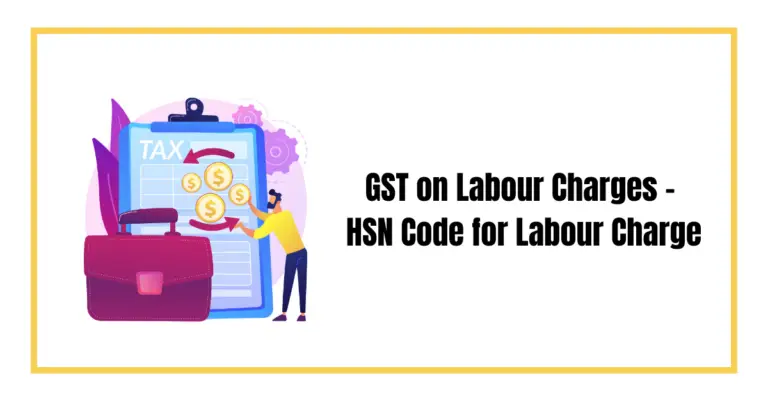This blog helps to understand better the distinction between GSTR 2A and GSTR 2B. At the same time, the readers can get a basic idea of both the forms of tax such as GSTR 2A and GSTR – 2B
Have you ever come across the tax connotations mentioned above? If not, then this blog is for you. Understanding GSTR 2A and GSTR 2B is not difficult, especially if you understand the basics of the norms related to Goods and Services Tax.
The following two forms of auto-populated returns/statements are just recently established under the Goods and Services Tax:
- Details of automatically drafted supply on Form GSTR-2A
- Auto-drafted ITC statement on Form GSTR-2B
It’s interesting to note that the statement, as mentioned earlier, includes information on both inbound supplies and an input tax credit. Since both words cover the same information, it is crucial to comprehend how they differ.
The current page briefly compares Forms GSTR-2A and GSTR-2B, as well as guidelines for which statement should be used as the foundation for an Input tax credit.
Fundamentals of Form GSTR-2A And Form GSTR-2B
Understanding the fundamentals of Form GSTR-2A and Form GSTR-2B is necessary before understanding the variances. But, readers interested to understand the issues related to such tax calculations should be able to differentiate between purchase-related transactions as well as sale-related transactions. In order to understand the given concepts, please go through the content given below.
Form GSTR-2A: Precisely, Form GSTR-2A is an automatically generated return that shows inbound supplies (purchase-related transactions) that happen in a given context in any particular business organization.
It is important to note that, the following returns’ supplier, seller, or counterparty information is used to generate the Form GSTR-2A automatically:
- Form GSTR-1, the return that a typical registered individual must file.
- Form GSTR-5, a non-return resident must be filed
- The return that an input service distributor must file, remains to be Form GSTR-6. On the contrary, it is important to note that:
- Form GSTR-7, remains to be the tax deductor’s return.
- Form GSTR-8, GST return filing that must be submitted by any e-commerce operator responsible for tax collection.
- It also includes information on goods imports and inward supplies of items from SEZ developers/units.
How can you obtain GSTR – 2 B in order to get input tax credit information?
Form GSTR-2B is an automatically created (system-generated) statement that provides input tax credit information.
- On the 12th day of the following month, the statement is automatically generated.
Based on the following returns provided by the suppliers/seller:
- Form GSTR-1; o Form GSTR-5;
- Form GSTR-6; and o Import data obtained through ICEGATE; the details in Form GSTR-2B are automatically filled in.
Differentiating Form GSTR-2A From Form GSTR-2B: Key Points to Understand
Even though Forms GSTR-2A and GSTR-2B show the same information, they differ in several ways. The distinction between the two forms is outlined below:
- The GSTR-2A form is an example of a dynamic statement. Continuous updates will be made to the information on inward supply about the input tax credit.
Form GSTR-2B, on the other hand, is a type of static statement. The information will constantly be updated.
- The basis for the reflection of details- For Form GSTR-2A, the inward supplies’ specifics will be reflected in the statement in real time.
Put another way; the information will be updated whenever the supplier provides information on outward supplies, either in Form GSTR-1 or by using the Invoice Furnishing Facility (i.e., IFF).
For instance, the registered person neglected to report some supplies when filing Form GSTR-1 for January 2021. The registered person noted the missing collection on Form GSTR-1 for February 2021. Accordingly, information about missed deliveries will appear in Form GSTR-2A in February 2021.
The specifics of inward supplies will, however, be static in the case of Form GSTR-2B. It will include information on outgoing stores that the provider reported between two due dates for Form GSTR-1 or the Invoice Furnishing Facility.
Let’s say, for illustration purposes, that the registered person provides information on outbound shipments for January 2021 after the deadline. If this is the case, Form GSTR-2B for January 2021 will not contain the relevant information regarding inward imports and the input tax credit.
- Separation of Input Tax Credit Eligible and Ineligible Parties-
The division of eligible and ineligible input tax credits is not provided in Form GSTR-2A. In contrast, Form GSTR-2B briefly distinguishes between input tax credit that is eligible, and that is not.
- Data source: The supplier’s returns in Forms GSTR-1, GSTR-5, GSTR-6, GSTR-7, and GSTR-8 are the basis for the data collection and compilation in Form GSTR-2A.
In contrast, Form GSTR-2B compiles information from the supplier’s Forms GSTR-1, GSTR-5, and GSTR-6.
Input Tax Credit Justification
Following rule 36(4) of the Central Goods and Services Tax Rules, 2017, the registered person will be qualified to claim an input tax credit for invoices or debit notes that the supplier does not record in Form GSTR-1 or the invoice furnishing facility, up to a maximum of 5%.
In this case, it would be necessary to decide whether to use Form GSTR-2A or Form GSTR-2B as the base to comply with the requirements of Rule 36 above (4).
As was mentioned previously, Form GSTR-2B is static and can be used as a base. Notably, the GST system currently automatically updates Form GSTR-3B with information from Form GSTR-2B about an input tax credit. It is crucial to note that neither the board nor the government has clarified the issue till date.
Conclusion
This blog is beneficial and valuable for understanding the distinction clearly and vividly. However, for the readers, it is suggested that one should have a prior understanding of corporate as well as other tax formats to comprehend the differences between GSTR 2A and GSTR 2B respectively. The fundamentals of such procedures remain to be intricately associated as the applications of theories vary in relation to the business transactions being carried out in a given context. Get in touch with the legal experts of Vakilsearch to know more.










